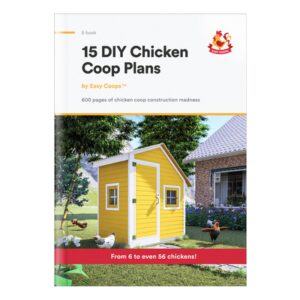Welcome to our comprehensive guide on building a cheap chicken coop. In this article, we’ll delve into cost-effective methods and efficient strategies to create a budget-friendly poultry housing solution. Our aim is to provide you with practical insights and detailed instructions, empowering you to build an affordable chicken coop that not only meets your feathered friends’ needs but also saves you a significant amount of money.
Building a Cheap Chicken Coop:: Building an Economical Chicken Coop
Raising chickens can be both rewarding and cost-effective for many individuals. Not only can raising them provide fresh eggs, meat and fertilizer – as well as giving you a sense of self-sufficiency and connection with nature – by raising your own flock, you’ll have access to nutritious eggs free from harmful chemicals or antibiotics found in store-bought varieties, while having control of its quality allows for optimal quality meat products in your daily diet.
One of the major advantages of raising chickens is their potential cost savings. While initial investment may be required to set up a chicken coop and purchase chicks or adult birds, their long-term benefits far outweigh this expense. Producing your own eggs and meat means less dependence on grocery stores or farmers markets where prices fluctuate wildly; using leftover kitchen scraps as food for chickens helps further cut expenses while supporting sustainability efforts.
Key Takeaways Raising chickens offers many advantages, from fresh eggs and an enjoyable hobby, to saving money through DIY coop construction. When planning a coop design, keep size, location and materials costs in mind to reduce spending on prefabricated structures.
Creative coop design can maximize space and save money on heating and nesting boxes, as well as predator protection costs. To keep your chickens safe from harm, predator proof protection must also be considered a top priority.
Planning Your Chicken Coop: Size and Location Considerations
Planning a chicken coop requires taking into account both size and location factors in order to create an ideal living environment for your flock while making maintenance simpler for yourself. The size of your coop depends on various considerations, including its purpose – such as whether they will have access to outdoor runs during the day, or remain confined within their enclosure 24/7.
General guidelines suggest providing 4 square feet per bird inside their coop if they will not have access to outdoor runs during daylight hours; however, providing more space can alleviate stress among birds due to overcrowding and save both time and money in future expansion plans.
Location is also of great importance in choosing where to place your chicken coop, so that it receives adequate sunlight and drains properly to avoid waterlogging. Placing it near a water source makes providing freshwater easier while making cleaning and maintenance tasks simpler. Providing easy access for maintenance tasks is essential as well.
Selecting Cost-Effective Materials for Construction Projects

Building a chicken coop doesn’t need to break the bank; there are numerous cost-effective materials that you can choose for your coop that can save you money while providing safe and comfortable environments for your flock.
One approach is using recycled or repurposed materials in your chicken coop design. Many items that might seem out-of-place at first can become useful components – for instance old pallets can serve as walls or flooring material while old windows or doors may provide ventilation openings or entry points.
Find affordable materials by shopping locally or online marketplaces – often there are surplus building supplies at discounted prices that you can use in building your chicken coop without compromising its quality.
DIY Coops Versus Pre-Made Coops: Which Option Is More Budget-Friendly?
Initial and Long-Term Cost of Coop Systems Wife Made Coop Type
Budget concerns play a vital role in making an informed decision when selecting between building your own chicken coop or purchasing pre-fabricated one.
Building your own coop gives you more control over design and customization while potentially saving money on labor costs. By following easily available plans or tutorials online or in books, you can craft an environment tailored specifically to the needs of your flock without breaking the bank.
Pre-made coops offer convenience and time savings as they come pre-assembled with all required components included. While initially more costly than building your own, factors such as time saved during assembly and potential mistakes avoided should also be taken into consideration when assessing overall cost-effectiveness.
Maximizing Space with Creative Coop Design Ideas
Space optimization is of utmost importance when designing a chicken coop, especially if your available space is limited. By employing creative design strategies, you can maximize use of available area and ensure your chickens have plenty of room to move freely around their new home.
One effective strategy to maximize space is by taking advantage of vertical space. Installing multi-level roosting bars or shelving for nesting boxes can significantly expand usable area within a coop without increasing its footprint, while hanging feeders and waterers help free up floor space while decreasing clutter.
Repurposing nesting boxes as seating areas for humans is another innovative idea. By adding cushions or pillows on top of sturdy nesting boxes, seating options are created that also serve as storage compartments for chicken supplies or tools.
Feed Your Flock: Tips to Save Money on Chicken Feed
Feeding your flock can be a considerable expense when raising chickens; however, there are cost-effective strategies you can employ to provide nutritious meals without breaking your budget.
Growing your own feed is an excellent option if you have access to land or a garden, providing fresh food for your chickens as well as providing control of quality control while avoiding potential contaminants found in commercial feed. Planting crops such as corn, sunflowers or wheat allows you to not only produce nutritious treats for them but also minimize potential contaminants found in commercial products.
Feeding in bulk is another cost-cutting strategy. Many local farmer cooperatives offer discounted prices when purchasing large quantities at once – not only does this save money, but it reduces trips to stores while assuring constant food supplies for your flock.
Supplementing their diet with kitchen scraps can reduce dependence on commercial feeds while providing additional nutritional benefits from fruits and vegetables that would otherwise go to waste.
Watering Your Chickens: Cost-Effective Solutions
Watering your chickens regularly is essential to their health and welfare; but that doesn’t have to be expensive! There are various cost-effective watering solutions you can easily implement into their coop.
Gravity-fed waterers offer an economical solution that ensures an uninterrupted supply of fresh water to your flock. By elevating a container above ground and connecting drinking cups or nipples to it, an automatic watering system is created which requires minimal upkeep.
Repurposing containers as waterers is another budget-friendly solution. Old buckets, plastic containers, or large PVC pipes can easily become functional waterers by attaching poultry-specific nipples or making openings for chickens to drink from.
Regular cleaning and refilling of waterers will help maintain good hygiene standards while keeping costs under control. Your chickens will stay hydrated without incurring unneeded expenses!
Keep Your Chickens Warm: Low-Cost Heating Options
As temperatures fall, providing your flock with adequate heat is essential to avoiding frostbite and other health complications. There are several cost-effective heating solutions that can keep their flock toasty without breaking the bank.
Heat lamps are an efficient and cost-effective solution to providing additional heating in chicken coops during winter. Emitting radiant heat, they can easily be installed using hooks or chains attached to the ceiling of the coop for simple setup and use. However, use with caution as heat lamps pose a potential fire hazard if left unsecured and unmonitored.
Insulating your chicken coop is an effective way to retain heat generated by its inhabitants while keeping drafts from infiltrating their living space. Insulation materials like straw bales or foam boards can be added along walls and under roosting bars for added insulation value at an economical cost.
Nesting Boxes and Roosting Bars: Craft Your Own
Building nesting boxes and roosting bars yourself not only saves money, but it also allows you to tailor them specifically to the needs of your flock while providing comfort during rest periods.
Nesting boxes should be created with privacy in mind since hens prefer quiet places for laying eggs. Repurposing materials such as wooden crates or plastic storage containers is an economical solution; by adding bedding material like straw or wood shavings you create an inviting and cozy place for your hens to lay their eggs.
Roosting bars should be strong enough to support the weight of your chickens while still offering sufficient space for them to perch comfortably. Tree branches or upcycled wooden dowels make ideal alternatives that mimic natural perching surfaces found in nature.
Predator Protection: Cost-Effective Solutions to Keep Your Chickens Safe
Protecting your chickens from predators is paramount for their wellbeing; however, that doesn’t have to mean racking up an enormous bill on elaborate security measures. There are cost-effective strategies available for keeping predators away while remaining within budget.
Utilizing hardware cloth is an affordable solution to predator-proof your chicken coop without breaking the bank. This wire mesh material features small openings designed to block predator access while still allowing adequate ventilation within your coop.
Electric fencing can offer another affordable way of providing added protection from predators such as raccoons or foxes. By installing low-voltage electric fences around your chicken run’s perimeter, low voltage electric fencing acts as a deterrent against potential threats entering.
Reinforcing existing structures such as fences or doors on a regular basis is another powerful means of deterring predator attacks without incurring significant financial costs.
Budget Friendly Way to Enjoy the Fruits of Your Labor
Raising chickens can be both rewarding and cost-efficient if approached carefully and planned out carefully. The convenience of having fresh eggs, meat and fertilizer at hand cannot be overstated – especially considering potential savings over time.
By planning the size and location of your chicken coop carefully, selecting cost-effective materials, optimizing space through creative designs ideas, saving money on feed and water solutions, offering low-cost heating options, creating nesting boxes or roosting bars of your own creation, as well as taking precautionary measures against predators, you can build an efficient chicken coop without breaking the bank.
So why wait? Start building your budget-friendly chicken coop now, and reap all the rewards of raising chickens while saving money in the process.
FAQs
What Is A Chicken Coop? A chicken coop is a shelter or housing structure specifically designed to house chickens. This allows them to safely lay eggs, roost securely, and rest.
Why is having a chicken coop important?
An essential aspect of owning chickens is having a secure home for them to reside in. A chicken coop provides this shelter from predators, extreme weather conditions and any potential threats, providing protection from predators as well as extreme temperatures or other potential risks.
What are the advantages of creating an economical chicken coop?
Building an inexpensive chicken coop can save money while still providing your birds with a safe and comfortable home. Plus it makes for a rewarding DIY project!
What materials are required for building an affordable chicken coop?
Material requirements for creating an economically friendly chicken coop include wood, chicken wire, roofing material, screws, nails and hinges – as well as optional insulation, paint or nesting boxes.
How much does it cost to build an affordable chicken coop?
Building an economical chicken coop can vary widely depending on its size and materials used, though basic designs should still cost under $100 to construct.
What are some budget-friendly tips for building a chicken coop?
Some strategies for creating an affordable chicken coop include using recycled materials, creating a smaller structure and selecting simple designs. Furthermore, it’s crucial that you research different options prior to beginning this project.
How can I maintain my chicken coop?
Maintaining a chicken coop involves regularly cleaning and disinfecting it, providing fresh food and water, monitoring any signs of illness or injury in the chickens, as well as checking for damage or wear and tear in the coop itself. It’s also essential that any repairs be carried out promptly when necessary.


